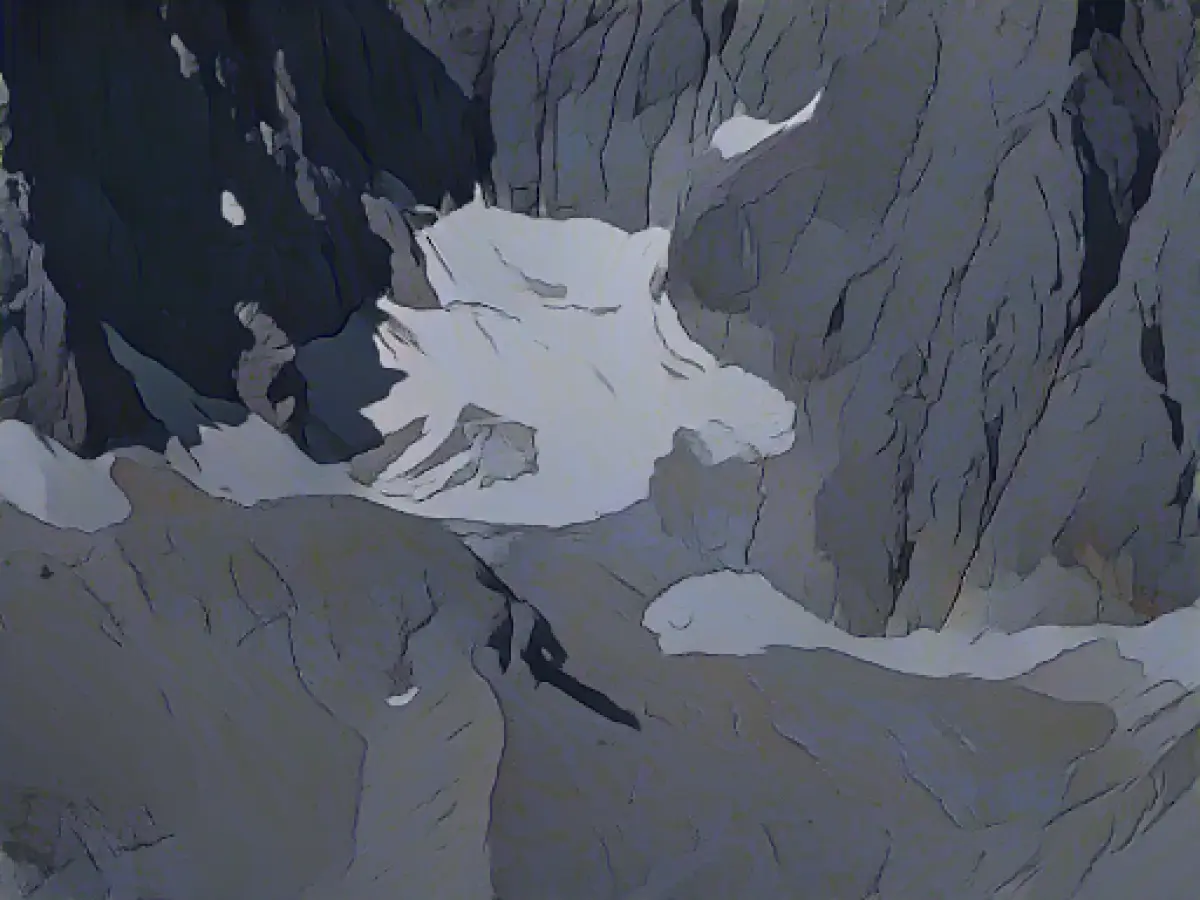Glaciers on the verge of melting - breathing space in the "dying process"
Some of Germany's last four glaciers on the Zugspitze and in the Watzmann region have survived the summer better than feared. They have retained their status as glaciers for the time being.
Nevertheless, they cannot be saved. According to forecasts by researchers from the Bavarian Academy of Sciences and Humanities (BAdW), the last of the formerly "eternal" ice will have disappeared in around 15 years.
According to new measurements by BAdW scientists, the Watzmann and Blaueis glaciers near Berchtesgaden in particular have lost comparatively little surface area this summer. The ice volume is still being evaluated. Measuring the ice cover is complex.
"We are currently evaluating the data - and it looks like we didn't have such a bad summer for the glaciers in Berchtesgaden," said glaciologist Christoph Mayer from the BAdW, which compiles a glacier report for the state government every few years. "We still had snow on the glaciers in Berchtesgaden at the end of the season, at least in places." Snow reflects the sunlight and thus protects the ice. The cold spring with late snowfall probably also contributed to the slow melting.
Bad news for the Zugspitze
Things are looking worse this year on Germany's highest mountain, the Zugspitze. "The areas on the Höllentalferner and the Nördlicher Schneeferner have become significantly smaller," says Mayer. The Nördlicher Schneeferner in particular has suffered. While the Höllentalferner and the Berchtesgaden glaciers tend to be in the shade, it is very exposed to the sun.
In July, representatives of the Protestant and Catholic churches held a requiem for the Nördliche Schneeferner in the Church of the Visitation of the Virgin Mary on the Zugspitzplatt - as a wake-up call for the climate crisis and the dangers to nature and humanity. With pictures of the dying glacier with its dirty gray ice, prayers and a blessing, the faithful celebrated its expected demise - pre-posthumously, because according to the current forecast, the Nördlicher Schneeferner still has around seven years to go before it loses its glacier status.
Last year, the experts stripped the Südlicher Schneeferner of its status as Germany's fifth glacier. At around one and a half hectares - that's about two soccer pitches - it was half the size it had been four years previously. And it was no longer flowing. But flowing is a criterion for classification as a glacier.
Ice is disappearing faster and faster
Alongside general warming, the increasing lack of precipitation as snow is a key factor in the ever faster disappearance of the ice. "The less snow we have, the less a glacier is protected," says Laura Schmidt, science communicator at the Schneefernerhaus environmental research station on the Zugspitze. This year, the warm September and October - the warmest since measurements began on the Zugspitze - have taken their toll on the ice. "The northern Schneeferner is doing badly." Schmidt sees the shrinkage in summer every time he looks out of the window.
Cold snaps used to provide a protective blanket of snow on the ice for at least a few days, even in summer. But this is happening less and less. Rain warmer than 0 degrees, high humidity and long periods of sunshine are accelerating the melting of the glaciers.
Ice reserves may last for another two or three years
Even at the last comprehensive measurement in 2018, Höllentalferner and Nördlicher Schneeferner - the two largest glaciers in Germany - were only just over half the size of the Oktoberfest grounds at just over 16 hectares each. The two glaciers in Berchtesgadener Land were around five hectares in size at the time. According to Mayer, the ice reserves there may last for another two or three years - or even a little longer, depending on how the next summer goes. According to the scientists, the summer of 2022 with weeks of sunshine was "devastating": the melt was around 50 percent greater across the Alps than in an average year.
The Höllentalferner is holding up best. It lies in a deep hollow and is regularly fed by avalanches, at least in the upper part, not least due to its location. Scientists assume that it will survive the longest - perhaps until 2035, is the cautious forecast of glaciologist Mayer. By then, Germany will probably be free of glaciers.
- The Watzmann and Blaueis glaciers near Berchtesgaden, despite losing surface area this summer, have retained some resilience due to snow reflection and cold spring conditions, according to glaciologist Christoph Mayer from the Bavarian Academy of Sciences and Humanities.
- Despite the relatively stable condition of some glaciers, the BAdW researchers project that the last of Germany's eternal ice will have vanished within the next 15 years, including the well-known Nördlicher Schneeferner on the Zugspitze.
- Climate change and the reduced amount of snow precipitation have been identified as primary factors contributing to the accelerating disappearance of glaciers in the Alps, as emphasized by Laura Schmidt, a science communicator at the Schneefernerhaus environmental research station on the Zugspitze.
Source: www.dpa.com








